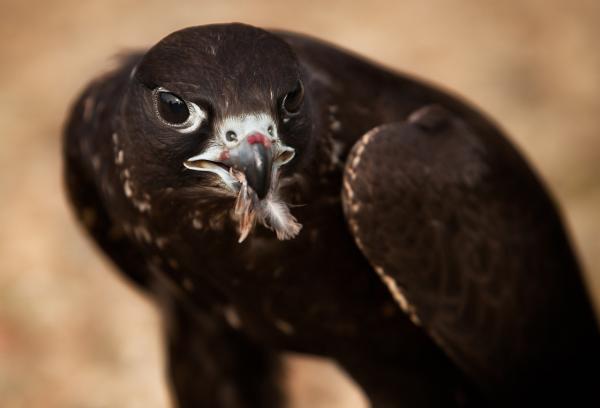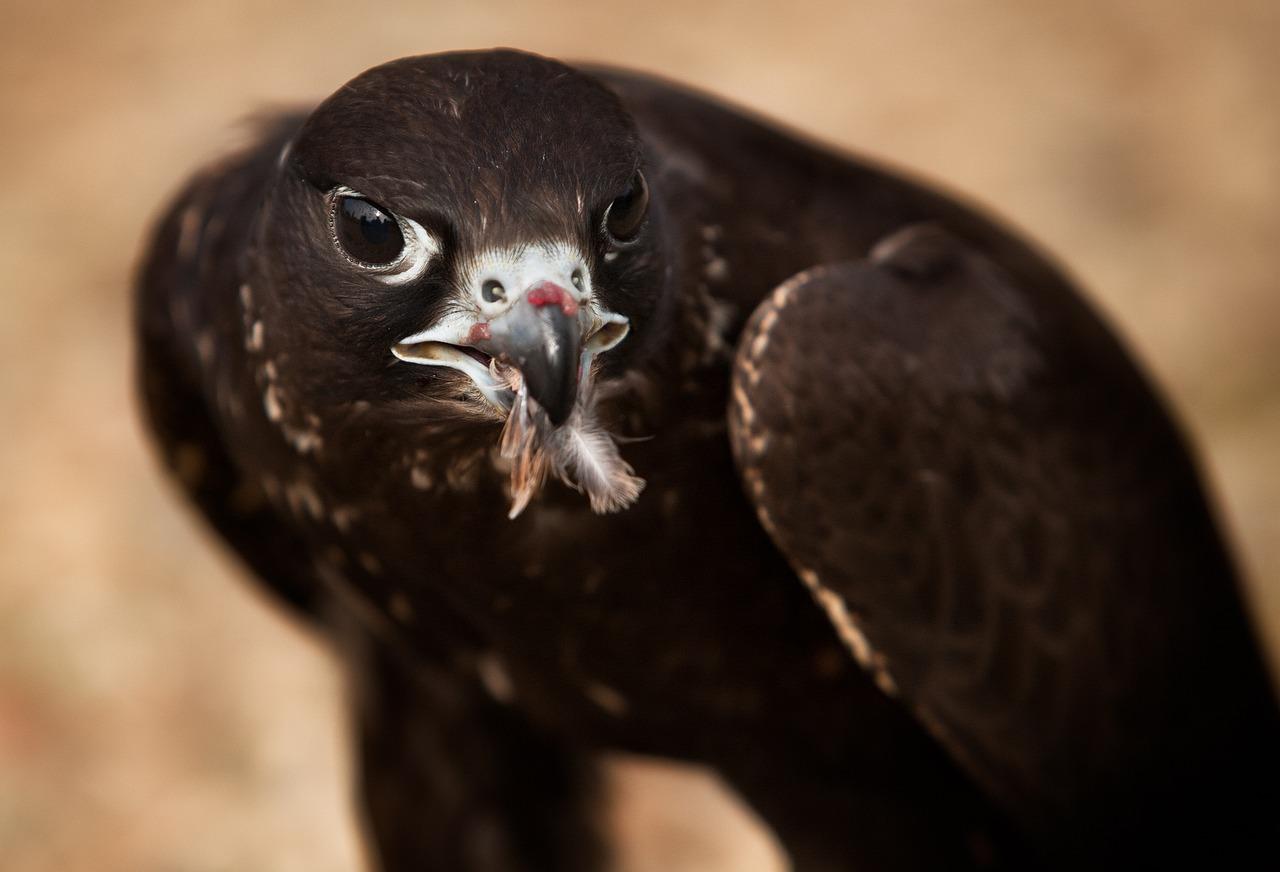Types of Scavenger Animals With Examples


Scavenger animals are those that feed on carrion, i.e. the dead and decomposing bodies of other animals. Food chains are linear structures where one animal preys on another, which preys on another and so on. It is important to remember that food chains are a part of food webs, much more complicated networks of prey and predators, as well as those which feed on plant vegetation. It is further complicated by the fact many animals will find food from various sources, not only omnivores. Certain animals are particularly well adapted to being predators, but others are adapted to eating what they leave in a form of symbiosis.
At AnimalWised, we discover more by looking at the different types of scavenger animals with examples of carrion-eaters and others. We see how they use scavenging to survive and how they are well adapted to do so.
What are scavenger animals?
As with all animals, scavengers are heterotrophic organisms. This means they cannot create their own food, so they have to find it from elsewhere. For scavengers, this food will be in the form of decaying organic animal matter or even waste such as feces. Not all will be able to scavenge for the same types of food, but they all carry out the same process of either eating food that has been killed by another animal or that is otherwise dead.
Carrion-eaters are scavengers that specifically feed on the carcasses of dead animals. Some scavengers will also feed on feces, but not all will. Although we associate scavenging with carnivorous animals, some herbivorous animals will also scavenge. For example, an animal may eat the remains of a piece of fruit which has been taken from a tree by another animal. For this reason not all scavengers are technically carrion-eaters, although the terms are used interchangeably when discussing carnivorous scavengers.
Decomposition is a natural process necessary in ecosystems for matter and energy to be renewed. It is carried out by a multitude of organisms, many of which are decomposing bacteria or chemoorganotrophs because they obtain energy through chemical reactions using decomposing organic matter as a substrate. Organisms which obtain nutrients from decomposing plant or animal matter are also known as saprophages.
Another very important group of organisms are fungi, both microscopic and macroscopic. They will obtain the nutrients they need from carrion and other decomposing organic material, but they are not considered scavengers since they are not animals.
It is important to note that many predators are also scavengers. This includes apex predators such as wolves, bears and eagles. Although they can kill animals themselves, they will not pass up the opportunity to eat readily available food if they can.
Scavengers need to be well adapted to scavenging. Although we humans will scavenge, we cannot usually eat carrion since it can contain harmful microorganisms which even cooking cannot always kill. Carrion-easters will also need the right appendages to be able to take meat of the bone of a carcass or otherwise obtain their food. We look at the different types of scavenger animals to learn more.
Learn some more background with our article on what are scavenger animals?

Types of scavenger animals
The different types of scavenger animals are categorized by the types of organisms which they consume. As we have stated above, we most associate scavenging with carrion-eaters. However, there are other types of scavengers with the main ones being the following:
- Detritivores: animals that feed on detritus or plant parts that accumulate in the soil, such as leaves, roots, branches or fruits. After decomposition, they end up forming humus which is a soil that is very rich in organic matter. Learn how to make your own earthworm humus with our sister site's guide to making your own worm castings at home.
- Necrophagous scavengers: these organisms feed on carcasses or decaying body parts of animals. Normally, this action is started by bacteria that facilitate decomposing animals to assimilate organic matter. Saprophages are sessile types of necrophagous animals, meaning they do not move.
- Coprophagous organisms: they are organisms, mostly fungi and decomposing animals, that feed on organic matter that is still assimilable from feces.
Definition of scavenger animals
The most basic definition of scavenger animals is the following:
Those living beings belonging to the animal kingdom that feed on decomposing organic matter.
We find scavengersin both the invertebrate and vertebrate groups of animals. Among the first, perhaps the most important group are insects. These include many different species of flies, wasps or beetles. We can find more examples of decomposing vertebrate animals is in the animal groups of mammals and birds.
The abundance of this type of animal varies according to the climate. For example, scavengers of the desert are scarce. It is in humid places where we can find the greatest diversity of these organisms. The decomposing animals of the jungle and forests often have the greatest diversity and the greatest opportunity.

Examples of scavenger animals
Next, we show a list with some examples of scavengers classified according to the type:
Examples of detritivores:
- Earthworms (Family Lumbricidae): play a fundamental role in the formation of soil humus.
- Gastropods (mollusks, teredos and snails): many of these animals also feed on living plants, sometimes making them pests.
- Woodlice (Suborder Oniscidea): feed under rocks and other dark places.
- Mealybugs: can also become a pest for many plants.
Example of necrophagous scavengers:
- Diptera or flies (Families Sarcophagidae, Calliphoridae, Phoridae or Muscidae): in forensic science, these animals and beetles are taken into account to determine the moment of death.
- Coleoptera or beetles (Silphidae or Dermestidae families): another type of scavenger beetle which may also eat feces.
- Hyenas (Family Hyaenidae): some ecologists would not include scavengers as part of necrophagous fauna, but the truth is that they play an important role in the decomposition of dead bodies.
- Vultures (Family Accipitridae and Cathartidae): perhaps the animal most associated with scavenging. This is partly because they cannot hunt, making them obligate scavengers.
Examples of coprophagous scavengers:
- Coleoptera or beetles (Families Scarabaeidae, Geotrupidae and Hybosoridae): perhaps the most well-known type of coprophagous animal is the dung beetle since their name explains their diet.
- Diptera or flies (Calliphoridae, Sarcophagidae or Muscidae families: the green bottle fly (Phaenicia sericata) is very recognizable on animal droppings.
- Egyptian vulture (Neophron percnopterus): in addition to being a necrophagous scavenger, it supplements its diet with cow feces. It does so to absorb the carotenoids (plant pigment) that give its beak its striking color.
If you want to read similar articles to Types of Scavenger Animals With Examples, we recommend you visit our Facts about the animal kingdom category.
- Franco, D. P. M, Manzano, J. Q., & Cuevas, A. L. (2010). Methods to identify, diagnose and evaluate the degree of eutrophy. ContactoS, 78, 25-33.
- Galante, E., & Marcos-García, M. A. (1997). Detritivorous Coprophagous and Necrophagous. Arthropods and Man. Aragonese Society of Entomology. Saragossa.







